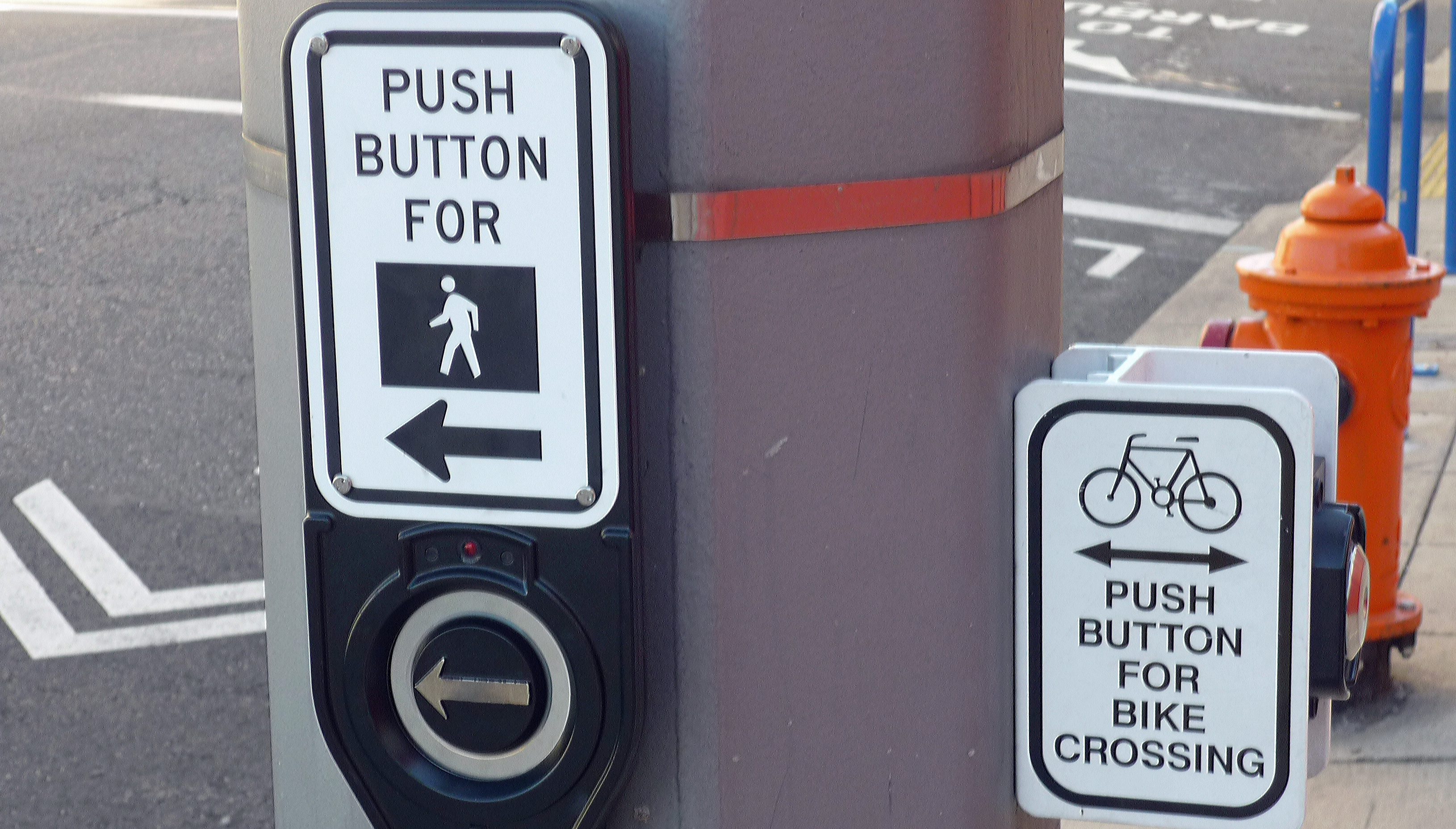View Blanc's slides
View Mathez's slides
The video begins at 0:33.
Following the 2015 annual meeting of the Transportation Research Board, this Friday seminar will showcase some of Portland State University's student TRB research.
Presenters:
Bryan Blanc, GRA in civil and environmental engineering
Leveraging Signal Infrastructure for Non-Motorized Counts in a Statewide Program: A Pilot Study
Summary: Transportation agencies are beginning to explore and develop non-motorized counting programs. This paper presents the results of a pilot study testing the use of existing signal infrastructure – 2070 signal controllers with advanced software to log pedestrian phase actuations and detections from bicycle lane inductive loops – to count pedestrians and bicycles. The pilot study was conducted at a typical suburban signalized intersection with heavy motorized traffic that was instrumented on all four approaches with pedestrian push buttons and advance inductive loops in the bicycle lane for signal operation. One day (24 hours) of video data were collected as ground truth. The data were reduced and compared to the controller logs. Results indicated that utilizing pedestrian phases as a proxy for estimating pedestrian activity is a promising avenue for counting programs. A total of 596 pedestrians used the intersection while 482 pedestrian phases were logged, resulting in an average of 1.24 pedestrians per phase logged. However, bicycle counts were not as accurate, due to a number site-specific factors: (1) inductive loop location, (2) loop sensitivity settings, (3) loop shape, and (4) nearly half of the bicycle volume through the intersection was riding on the sidewalk. The pilot study was part of a research project to develop guidelines for a statewide bicycle and pedestrian counting program for the Oregon Department of Transportation (ODOT).
Bio: Bryan Blanc was born in New York and raised in Connecticut. He moved to Portland, OR in the fall of 2013 after completing his B.S. in Civil Engineering at the University of Connecticut. He has always been interested in working with the built environment, but decided to concentrate his studies on transportation after a summer research project in 2011 examining parking issues in New Haven, CT. He was drawn to Portland (and Portland State University) because of the city's unique experience with bicycle transportation and PSU's remarkable synergy with the surrounding transportation agencies and private partners. His current research project involves the development of a smartphone application to collect travel and safety data about cyclists in Oregon using a combination of GPS and survey questions. Outside of academics, he enjoys reading, playing the guitar, exploring on his bicycle, and trying to visit every microbrewery in Portland.
Anais Mathez and Steven Howland, GRA and graduate student in urban studies and planning
Who Uses Peer-to-Peer Carsharing? Early Exploration
Summary: Peer-to-peer (P2P) carsharing is a system where a facilitating company connects car owners to car renters. Such systems are relatively new in the U.S. This paper aims to understand who is participating in P2P carsharing as a renter (as opposed to as an owner), why they join, whether and how often they rent vehicles, and why. Exploring these questions may provide insight on the potential for P2P carsharing to meet public policy objectives of reducing the impacts of personal vehicle ownership and use and providing mobility options for underserved populations. The analysis is based on 465 study participants who enrolled in a P2P carsharing service in Portland, Oregon during its first two years of operation (February 2012 to June 2014). The data, which come from a series of online surveys, are part of an on-going, multi-year research project and, as such, should be considered early findings. The people who joined P2P carsharing and this study tend to be younger and well-educated, consistent with research on traditional carsharing. Given two trends in vehicle ownership – the longstanding positive correlation with income and the emerging trend of younger Americans eschewing vehicle ownership in greater numbers than before - we created a typology of potential P2P renters to explore reasons for joining and the potential influence of P2P carsharing on vehicle ownership and mobility. The typology consists of: (1) Student Millennials,(2) Non-student Millennials, (3) Lower Income Non-millennials, and (4) Higher Income Non-millennials. Study participants were highly motivated to join simply because they like the idea of P2P carsharing. Not surprisingly, the Higher Income Non-millennials were less motivated by economic reasons. By June 2014, just over half (52%) of the study participants had rented a vehicle through the service. Actual use of the service is negatively correlated with car ownership. There are some early indications that the service may be expanding mobility options for lower income households.Bio: Anais Mathez is a graduate student in Urban and Regional Planning at PSU. She moved to Portland, OR after completing her B.A. in Urban Systems at McGill University in Montreal, Quebec. As a research assistant under the supervision of Jennifer Dill and Nathan McNeil, her work focuses on travel behavior and user preferences as a result of emerging peer-to-peer carsharing networks. Past research has focused on mobility patterns, strategic parking policies and greenhouse gas emissions quantification for transportation. Anais is also a Planning Analyst for Cogan Owens Greene, supporting multi-modal transportation projects in the Portland region, and will be graduating this spring.


